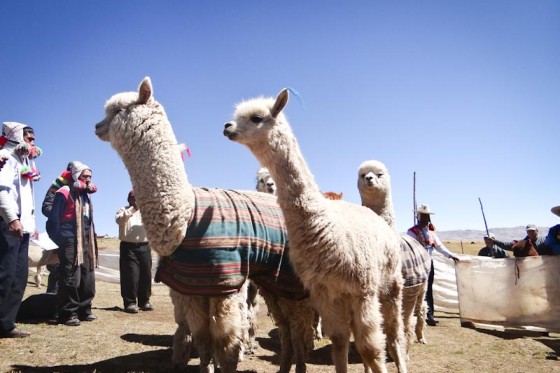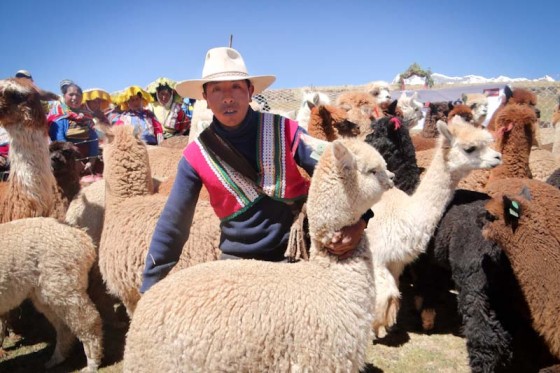What happens when donors give directly to the world’s poor, without any conditions or accountability?
It’s no surprise that the world of philanthropy is changing. On the heels of the Great Recession, inequality and social need are on the rise, while foundation support is waning, grants are ever more competitive, and individual households have less to give.
Within the U.S. and abroad, people inspired to give are looking for new ways to make the biggest impact for their dollar. While this change takes many innovative forms (like online fundraising platform Kickstarter, and micro-lending program Kiva), another new model that has emerged is direct giving.
Unlike its cousin the conditional cash transfer, direct giving is small-scale financial support to extremely poor households with no strings attached.
When many potential donors hear this scenario a common refrain kicks in: How could this be? Won’t the poor squander their resources on alcohol, tobacco, gambling? Won’t it get stolen or funneled through corrupt systems? The poor don’t know how to manage their money — we need to hold them accountable!
As it turns out, this model seems to offer promising solutions in some of the world’s poorest communities.
A recent New York Times story profiled the Youth Opportunities Program in Uganda. Through this program, collectives of young people could apply with a proposal to the Ugandan government. If their proposal was selected, the group would receive a sizable amount of money. They never had to report back.
Maybe the money was used for the stated purpose. Maybe not.
Either way, the results were staggering:
“It turns out that winning the money had profound effects. It made participants much more likely to enroll in skills training, and it increased the labor supply. It increased their earnings on two- and four-year horizons, especially among women. Indeed, women who won money from the program had average earnings 84 percent higher than women who did not, after four years. Winners were more likely to pay business taxes too. All in all, the annualized return on the “investment” of the cash transfer worked out to a whopping 40 percent.” – Annie Lowrey
Another approach, through the nonprofit Give Directly, specifically targets the most vulnerable households in Kenya by giving them cash transfers through Kenya’s national secure mobile payment system M-Pesa. How do they identify their target recipients? Simple: if your home lacks a solid (cement) wall, floor or roof, you’re household is eligible.
The system deserves more attention than I can offer now, but in short, it’s a drastic departure from the current industry standards. In particular, they prioritize efficiency over accountability, and mutual respect over conditionalities. Getting rid of the conditions attached to giving means less auditing and administrative work. And perhaps more importantly, it trusts that recipients to use the cash transfer however they see fit.
The idea of direct giving is not necessarily new. Heifer International, a global nonprofit based in the U.S., has been direct-gifting livestock to impoverished communities for nearly seven decades.
 Alpacas: the cutest way to alleviate poverty in Peru. (Photo courtesy Heifer International)
Alpacas: the cutest way to alleviate poverty in Peru. (Photo courtesy Heifer International)
Full disclosure, I may be a bit biased toward Heifer. They recently paid for me to take a trip to Peru to see some of their most successful programs in the Andean highlands outside of Cusco. (If you’re interested in hearing more about that trip, I have written about it here).
Heifer’s projects aren’t squarely in the no-strings-attached category, as they ask communities to sign on to a few cornerstone beliefs.
The most important one is passing on the gift. Whenever the primary recipient of Heifer’s initial gift feels they have a surplus (of animals, training, supplies, knowledge, etc…), they pass on the gift to another community member. The cycle continues, and at least in the communities I saw, the process led to resilient, supportive and cohesive communities.
Direct-giving an animal (alpacas in this case) did seem to usher in more empowered communities with greater resources, with more power to decide how extra income would be used (to note, in the communities I visited, most of the extra income was invested back into the various alpaca projects).
All three of these examples have operational differences, nuances in their goals and unique missions. But each has an interesting take on empowerment:
In the case of Youth Opportunities Program, the government grant office wants to empower young people to use their skills and motivation, supplying them with startup capital to overcome their largest hurdles.
Give Directly, on the other hand, rails against the industry standard to “empower experts to decide what is best for the poor”, and instead wants to, “empower the poor to set their own priorities.”
Heifer International’s approach incorporates both of these, but adds another layer: They empower recipients to also become donors themselves.
None of these models are foolproof. Can they scale up? What are the next steps for an individual, household or community that has ‘jumped’ out of the most dire impoverishment? What happens if, (as just happened in Peru after I left), a community that relies on one primary resource (alpacas) loses that resource to natural disaster (a surprise blizzard that wiped out most of the Andean highland alpacas).
Seattle residents know well and good that there is no easy solution to global poverty.
But maybe letting go of western philanthropy’s obsession with accountability, and instead trusting that a direct gift will be put to good use by the recipient, is a way to simplify the equation of international giving.



Great article and nice overview of unconditional cash transfers.
Personally I think can be effective and have a place in fighting global poverty. But they should be looked at as one of many tools that can be used, rather than the “silver bullet”.
Give Directly has received alot of attention and I really like how they are helping to drive the conversation of how money is used in the non-profit world. However, it seems to be too early to really declare UCT’s as a panacea for poverty.
Looking forward to more articles exploring the non-profit and NGO world!
I appreciate your comment, Donald. I agree that surely there is no silver bullet to fix poverty. What intrigues me about ideas like direct giving is that it challenges donors to let go of ideas of accountability, ‘best practices’ and expert knowledge coming from the West. Certainly, it will be interesting to track programs like Give Directly and how they are shifting the conversation on philanthropy and aid.
I think accountability, ‘best practices’ and knowledge gained from experience and research are still important, but they definitely need to be re-evaluated. Also, some parts of the GiveDirectly website comes off as too strident and I think it’s too early to really take that stance when the jury is still out.